Sit well—think faster, work more focused, react better

How a correct ergonomic sitting position can enhance your performance.
Sitting, especially sitting for long periods of time, is part of everyday life for many people: we sit at the computer, in the car, on the train or plane, we sit at school and work, and in our free time we often sit again: while eating, in front of the TV, or while gaming. But what influence do ergonomics and physical well-being while sitting have on concentration and long-term health? And how do you sit “correctly”? RECARO dealt with automotive, aviation, and now gaming seats for decades—especially from an ergonomic point of view—and this article provides some tips for better sitting as well as background information for understanding the relationships.
The good news first: sitting in itself is not unhealthy. There are postures such as walking or lying down that put less strain on the back, but a healthy, strong back can “cope” with prolonged sitting quite well if the sitting posture and seat are right.
Sitting even has positive aspects: the upper body is upright, the majority of the body's weight rests on the buttocks and the underside of the thighs. This relieves the muscles and joints that otherwise serve to keep the body upright. Sitting is thus ideal for giving the body a short rest.
In short bursts, mind you. This is because a permanent posture in which you are focusing on a screen for hours, for example, at the computer, is hard work for the body—even if it doesn’t feel like it. It “fights back” with tension, with neck or back pain. In addition, your ability to concentrate decreases and your reaction speed are also reduced.

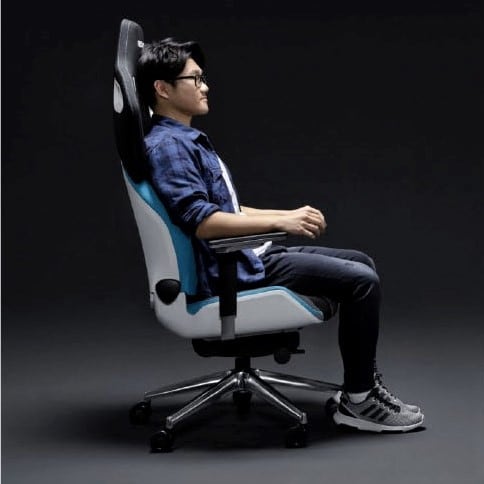
If you take care to sit well and ergonomically, you can positively influence your performance curve, avoid painful tension, and, incidentally, do something to keep your back healthy.
A short thought experiment that makes it easy to feel the right seating sensation is helpful:
The best thing to do when sitting is to imagine that your body is being gently and lightly pulled upwards by an invisible force at the highest point of the back of your head. What do you feel? The chin lowers towards the chest. The chest and ribs arch forward. The shoulders drop and move slightly backward. The navel moves inwards, the pelvis straightens. The body weight rests on the ischial tuberosities in the buttocks.
That’s exactly what it feels like to sit “perpendicularly.”
According to the laws of biomechanics, this is the optimal, most stable position for the back. The further you move away from this perpendicular line, for example, because you are slouching or hunched forward, the more the body has to compensate for the forces of gravity and the higher the pressure on the spine becomes.
But even this “ideal” sitting position is not healthy over a prolonged period of time because the human body is not designed for static postures, but for movement. However, if we have to sit in one position for a long time for a variety of reasons—just think of professions such as air traffic controllers, employees of rescue coordination centers, or pro gamers and racing drivers—the ideal sitting posture should be supported as best as possible.

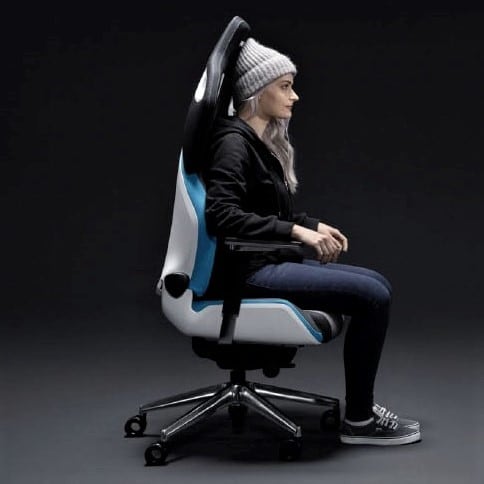
It is precisely these challenges associated with sitting that the ergonomics experts at RECARO have been dealing with for decades. They recognized very early on that so-called dynamic sitting is not ideal for all areas of application, because dynamic sitting always involves a certain amount of energy being used to support the body. Anyone who has ever sat on an exercise ball knows how many corrective movements and supporting forces are necessary to keep the upper body in a permanently straight, ideal position. Although this balancing process is largely subconscious, it also “costs” energy. Studies also show that people who concentrate on screen work lose control of their posture over time.
That is why RECARO takes a different approach to its areas of application: a good seat must support the body in such a way that you do not have to constantly control your own posture in order to be held in position. The seat ensures optimal support of the back as well as the stability of the pelvis. As the correct position of the pelvis is the starting point for a correct sitting posture - only when the pelvis is stable in the right position can the spine perform its support function optimally.
So what does the ideal seat have to offer? And how do you adjust it correctly in order to positively influence your own performance through an ergonomically perfect posture?
First of all, one important clarification: there is no one seat that is ideal for all applications—whether it’s in the car, on a plane, in the office, or at home when gaming. Each application has its own requirements for which the seat must be designed. However, there are a number of factors that need to be taken into account for seats used in a wide range of applications:
Proportions
The backrest must have generous dimensions so that even tall people are adequately supported up to the shoulder area. The seat should also be of a suitable length to provide enough support for the thighs.

The starting point for RECARO is a so-called ideal contour that reproduces the double-S of the spine in the backrest. Particularly important: the backrest curves forward in the area of the upper iliac crest to support the raised pelvis. Depending on the application, lateral guidance of the back is also advantageous because it further reduces the necessary support work of the muscles.



Seat cushion
Up to 80 percent of the body weight can act on a seat surface—so the seat cushion bears the main load. Therefore, the seat pressure distribution must be optimally balanced to avoid load peaks and to support optimal blood circulation. In addition, the ischial tuberosities must be stabilized in their position because only then does the pelvis—and thus the spine—remain in the correct position.

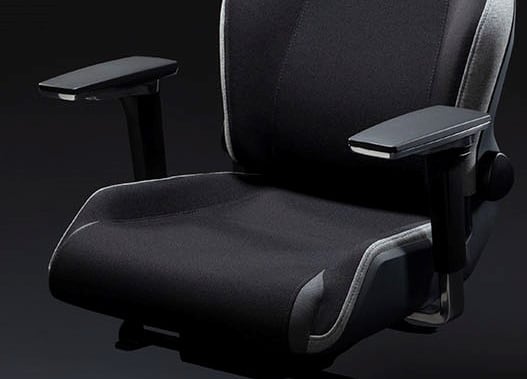
Adjustment options
A good seat should have the following adjustment options, for example: Backrest angle, seat height adjustment, and adjustable armrests.
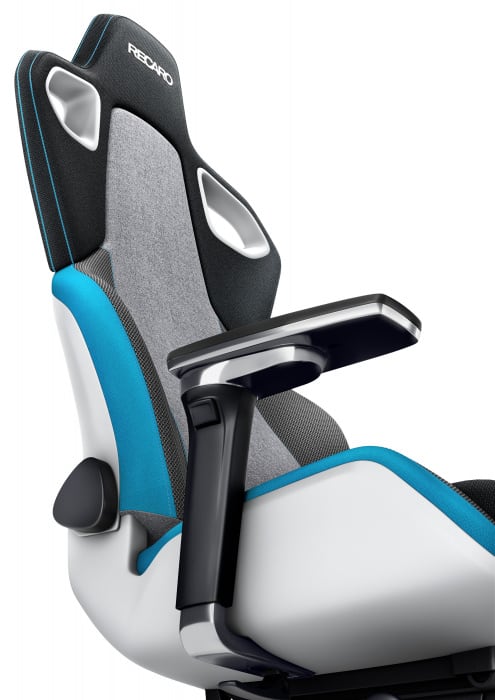

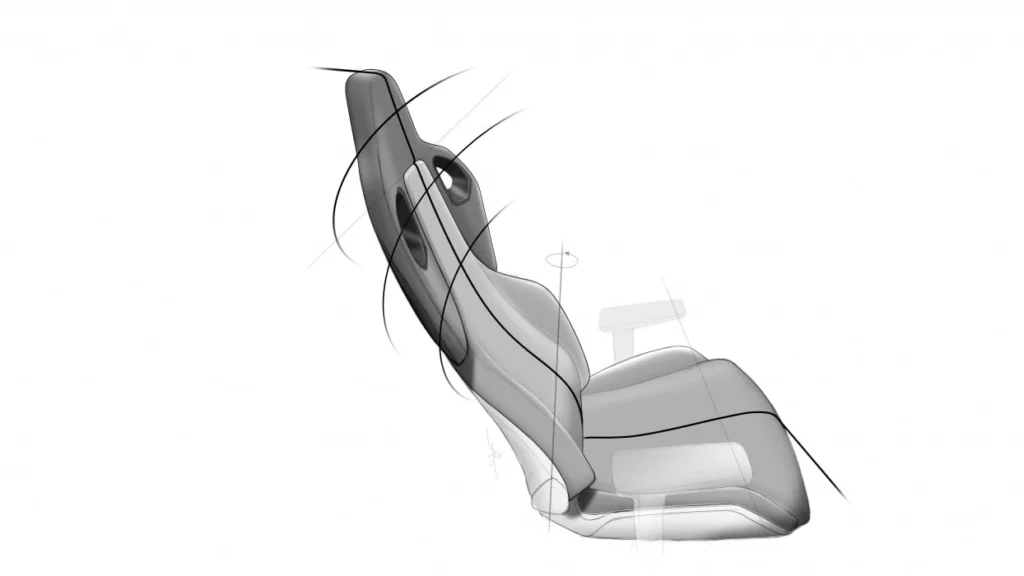
The seat should provide the best possible support so that the upper body does not have to expend too much energy on providing support while sitting. In this way, full concentration and performance can be achieved at the workplace, while learning, and also during performance-oriented sports such as eSports or motorsports.
RECARO has some helpful rules of thumb for basic seat adjustment—in this case for office use:
Use the whole seat, actively relieve strain.
- Use the entire seat surface, slide your buttocks against the backrest, actively lean into it.
- Place feet flat on the floor, choose a seat height so that the knees form an approximate 90-degree angle.
- Adjust the backrest angle so that the hip opening angle is slightly greater than 90 degrees.
- Adjust armrests so that elbows form a 90-degree angle, rest forearms.
But even then, breaks are indispensable. No matter how well a seat is designed and how well it is adjusted, we should avoid sitting for long periods without a break. It is also advisable to use the adjustment possibilities of the seat to vary the basic position, as even statically stressed muscles and joints need rest and movement—the intervertebral discs will thank you in particular.